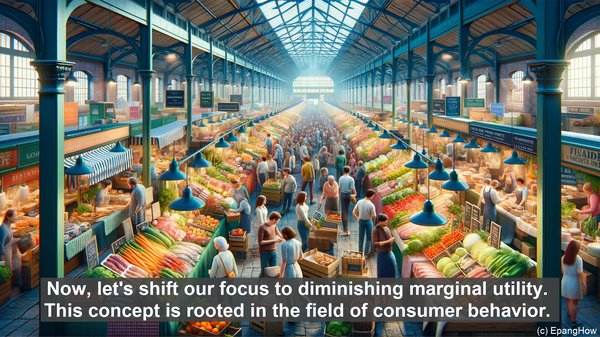Introduction
Hello everyone! Welcome to our channel. Today, we delve into the intriguing world of economics, specifically focusing on two crucial concepts: diminishing marginal returns and diminishing marginal utility. While they may sound similar, they have distinct meanings and implications. So, let’s begin our exploration!

Diminishing Marginal Returns
Diminishing marginal returns is an economic principle that states that as additional units of a variable input, such as labor or capital, are added to a fixed input, the overall increase in output will eventually start to decline. In simpler terms, it means that the more you add of a certain input, the less additional output you’ll get. This concept is often visualized through a graph, where the initial increase in output is steep, but it gradually levels off and may even decline. A classic example is a factory with a fixed number of machines. Initially, hiring more workers increases production significantly, but beyond a certain point, the benefits start to diminish. This principle is crucial for businesses to optimize their production processes and allocate resources efficiently.
Diminishing Marginal Utility
Now, let’s shift our focus to diminishing marginal utility. This concept is rooted in the field of consumer behavior. Marginal utility refers to the additional satisfaction or benefit a consumer derives from consuming one more unit of a product. Diminishing marginal utility suggests that as a consumer continues to consume more of a product, the additional satisfaction they derive from each unit diminishes. For instance, imagine you’re having a slice of your favorite pizza. The first slice brings immense pleasure, the second is still enjoyable, but by the fifth or sixth slice, the satisfaction starts to decline. This principle explains why individuals are willing to pay more for the first unit of a product compared to subsequent units. It also plays a role in pricing strategies and understanding consumer demand.
Key Differences
While both concepts deal with diminishing returns, the key distinction lies in the context. Diminishing marginal returns primarily applies to the production side, focusing on the relationship between inputs and outputs. On the other hand, diminishing marginal utility is centered around consumption, examining the connection between the quantity consumed and the satisfaction derived. Another difference is the shape of the curves. Diminishing marginal returns typically follows an inverted ‘U’ shape, while diminishing marginal utility often exhibits a downward-sloping curve. Additionally, the implications differ. For businesses, understanding diminishing marginal returns aids in resource allocation, whereas for marketers, comprehending diminishing marginal utility helps in pricing and product positioning strategies.
Real-World Applications
Both concepts have significant real-world applications. For instance, in agriculture, understanding diminishing marginal returns can guide farmers in determining the optimal use of fertilizers or labor. In the realm of technology, the concept is relevant when it comes to scaling up operations or adding more servers to a network. On the other hand, diminishing marginal utility is crucial in sectors like hospitality, where providing an exceptional experience for the first few interactions is vital. It also plays a role in the pricing of luxury goods, where exclusivity and limited availability contribute to their appeal. By grasping these concepts, individuals and organizations can make informed decisions and devise effective strategies.

